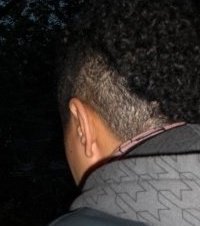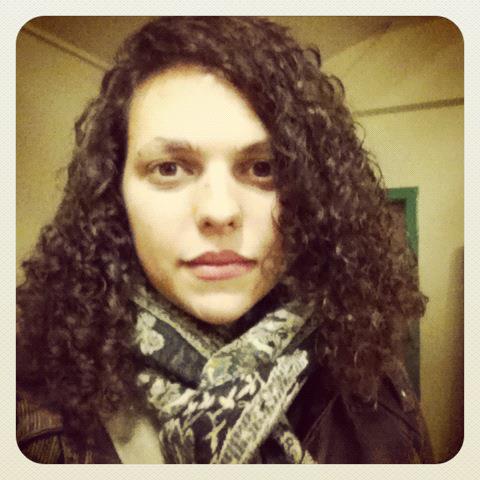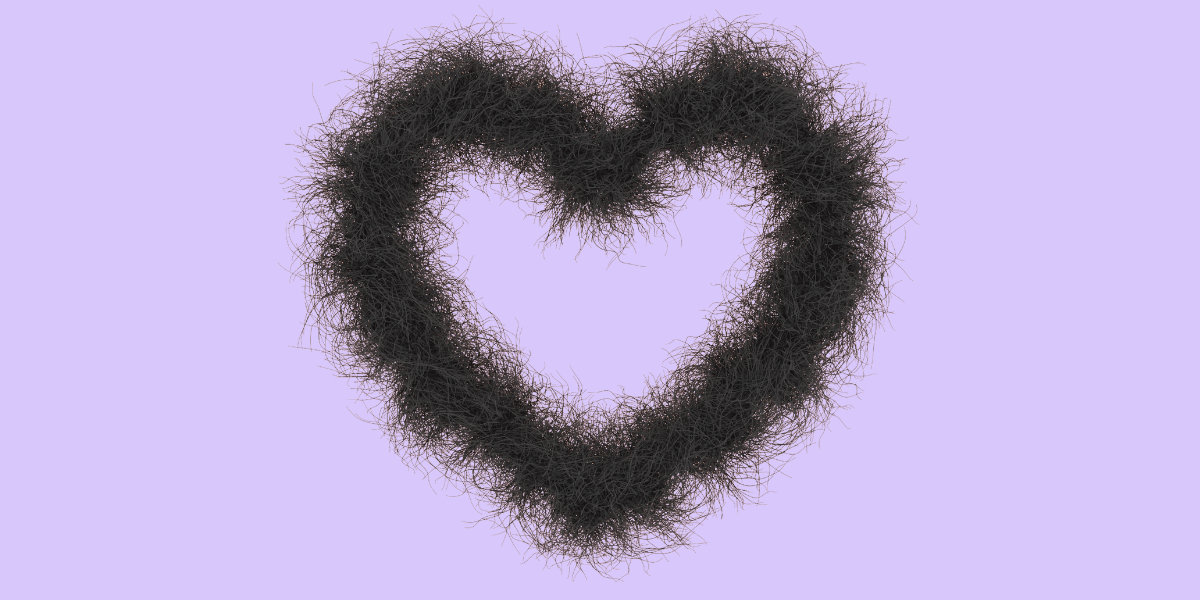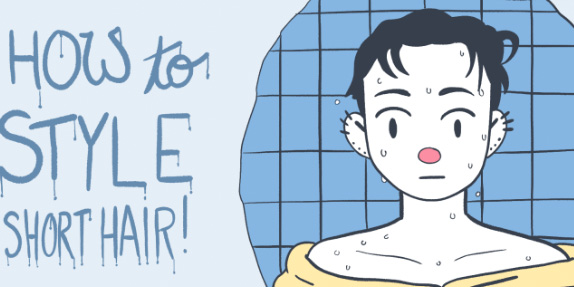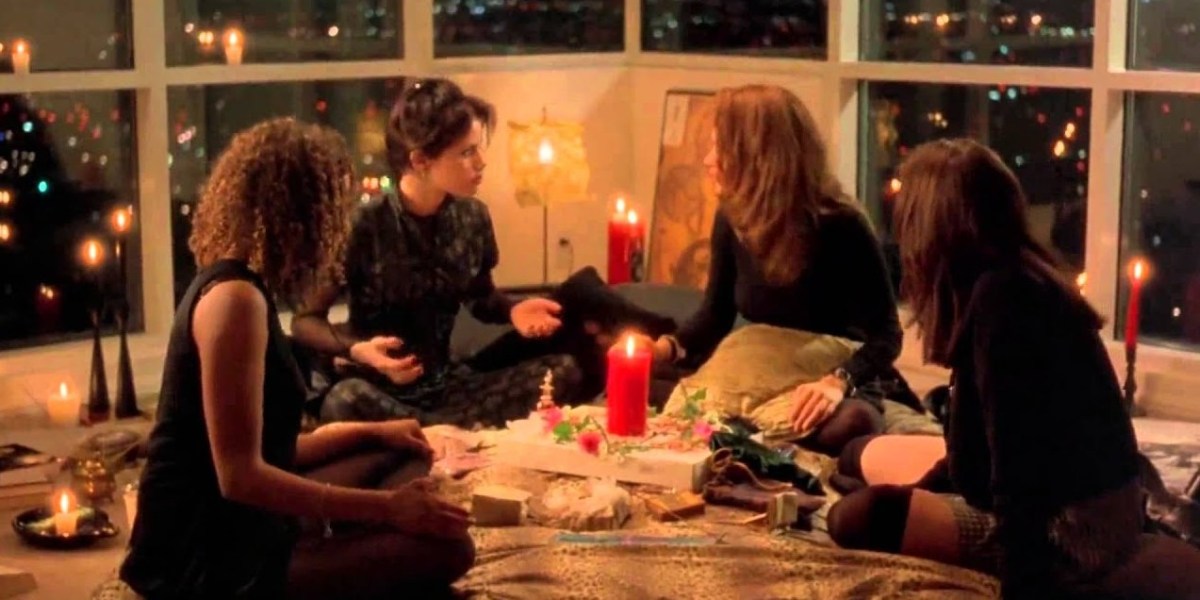Her hair was curly and untamed, and it lent her an air of slight madness, as though the thoughts in her head were springing directly out through her scalp.
– Shamim Sarif, I Can’t Think Straight
Hair! While first impressions are often based our expressions and words, the fluffy stuff that frames your cute face also plays a role in how society perceives you. More often than not, we play the game. We buy the products; we cut, color, highlight, razor and heat our hair to best suit our personalities. As queer folks, we’re particularly accustomed to playing with these concepts of gender and image. Curly hair comes with its own odd sort of self-awareness. If you have it, you probs learned at an early age that a part of you was already railing against the norm. And sometimes, standing out is the exact opposite of what you want to do. Adolescence can be an particularly awkward series of “Princess Mia Thermopolis breaking a brush” moments. You also realize that most people who love curly hair have never actually had it.
+
The People Who Have Shaped My Hair
by Malaika

As a kid, my ultimate hair-wish was to have flowing, windswept locks. But instead of moving my hair, the wind just moved things into it. Leaves and berries found dangling from my curls like decorations on a Christmas tree were reminders of days spent running around outside skinning my knees and beating the neighbourhood boys at Cops and Robbers.
I could tell my mom’s mood from how she brushed my hair. My head of frizz was like her personal stress ball, except instead of squeezing she pulled — yanking the brush through my hair until it felt like my scalp was in danger of being torn off.
“Mama!” I’d complain.
“Sit still, stop squirming.”
Closing my eyes and clenching my teeth, I promised myself I’d do more chores in the future.
On good days we’d chat about stories, fairies, the stupid mean kids in my class and God. It was a sacred mother-daughter ritual from which I’d emerge with a nicely coiffed fro, braids, or four puff-balls neatly arranged on my little head, making me look like Minnie Mouse.
My hair still didn’t blow in the wind, but nonetheless, I felt like pretty hot shit.

When I was thirteen and awkward, I decided my hair needed to be straight. I made lots of incorrect assuptions in those days, like that I couldn’t possibly be gay because sometimes I wore mascara.
“Could you just make it straight?” I asked the young hairdressing student. I was at a hairstyling school, you see. Going to a real salon was too expensive.
“There’s no way we’re spending that kind of money on your hair,” my mom had said, just like we didn’t spend “that kind of money” on clothes and designer back-to-school supplies.
“But my friend’s –”
“Do I look like your friend’s mom?”
So there I was sitting in front of the teenage stylist who was nervously eyeing my mass of wild curls like it housed a rabid beast about to jump out at her.
“I don’t usually…um…deal with hair, like yours.” She giggled and hesitantly fluffed out my hair. “There’s just so much of it. I’m going to call my teacher.” The teacher, a wrinkly fifty-something with a fake tan and bleach blonde perm, attacked my hair with thinning scissors like a woman on a mission. It was war — her against my hair — and she yielded those scissors of hers like weapons. I could see her frown in the mirror.
“Not many people have hair this thick,” she said accusingly. “If you want it straight, we gotta thin it down, but I don’t think it can ever be properly straightened.”
Snap, snap, snap went the scissor-weapons, her victims, my curly locks, on the ground like fallen soldiers. It was the scariest hair-related experience I’ve had in my life, and I didn’t even look good afterwards. I had to hide my hair in braids until the thinning-scissor-wounds grew out.

I didn’t let another white woman cut or style my hair until almost a decade later when I was in Montreal. I hadn’t been planning on cutting my hair, but there was a sign in the window of a bike shop that read, “Lesbian Haircuts: $15,” and the hairdresser was sexy in a quiet, hipster way.
“Have you cut hair like mine before?” I asked, having flashbacks of the Mrs. Wrinkle/Fake Tan Hair Attack.
“Of course.” Her blue eyes had a confident twinkle, and I decided she could do whatever she wanted to my hair.
It was amazing. It was fantastic. It was magic. I looked hot, gay, alternative — very Montreal queer-chique. I went home and danced around in my kitchen to Metric.
When I found out I got a scholarship to study in France, I grew out my lesbo-do for Europe. I figured longer hair would be more romantic, would better match the ancient architecture. I pictured myself in long skirts saying lots of “bonjours” and buying baguettes, my hair dancing gently in the wind to the soundtrack of Amelie.
Instead, I got an Afro. But that was cool too.
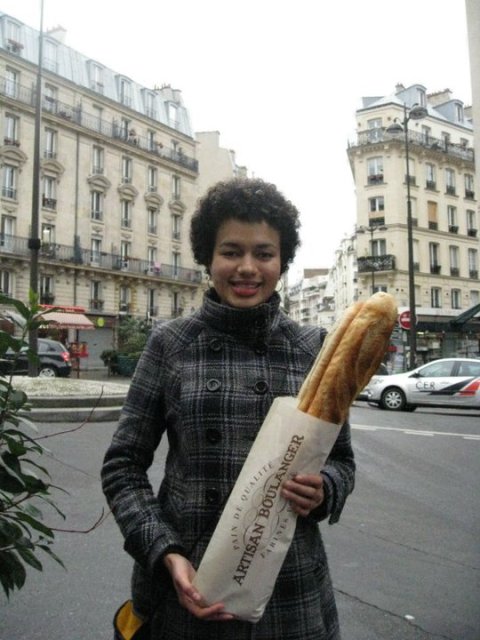
I haven’t cut my hair since Europe. Maybe it’s weird, but I like thinking about how my hair has been in so many countries and on all sorts of adventures with me. Unfortunately as it gets longer, it also gets more difficult to care for, especially here in Edmonton, a city known for its gigantic mall, not its humidity. While my straight-haired friends complain about grease, I have the opposite problem. There’s a defining moment in every curly-haired girl’s life when she realizes that general hair-care advice is not meant for her. Lather, rinse, REPEAT? Hell, no. I prefer to condition, condition, and moisturise. The other day I found a jar of coconut oil in the cupboard. I filled a cup with it, put it in the microwave and then dumped it on my hair. Another kitchen product that works well is olive oil. In fact, even my favourite store-bought hair products are made with olives. To define my curls, I use Vigorol Olive Oil Mega Moisture Mousse. For a leave-in-conditioner with amazing moisturising power that makes up for its cheesy name, there’s African Pride Olive Miracle Anti-Breakage Formula. Then there’s Creme of Nature Argan Oil. This spray-in conditioner smells so good it doubles as a perfume.
As my hair gets longer, I feel like it’s becoming more of its own being, complete with needs and a personality, but this doesn’t bother me in the slightest. I like satisfying its every whim, a bottle of conditioner in hand. It’s the least I can do for the comfort I get knowing I have a curly-haired partner for life, patiently watching me from up above my head.
+
Straight Until Not
by Carrie
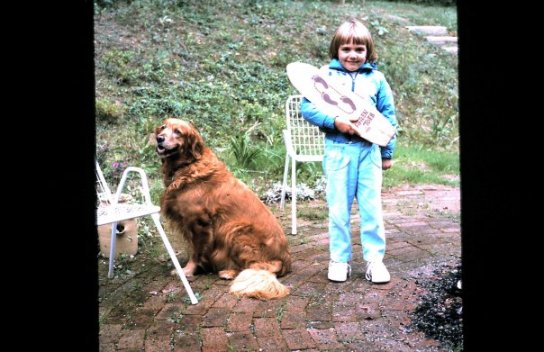
Five years ago, I came out to myself as a person with curly hair. As a kid I had a straight, dirty blond mop that I kept hidden under a baseball cap most of the time. But sometime between puberty and college, my hair got darker and wavier. I hardly noticed and for years was convinced that I had the most unruly straight hair in the world. It wasn’t until my friends introduced me to the wonders of mousse that I even considered my hair might actually be curly. But I found hair products too “girly” and suppressed my secret urge to explore beyond the straight lifestyle — the same went for my queerness, but that’s a story that involves less hair gel. The tipping point was probably when I almost caught on fire while using a flatiron in Hong Kong (pay attention to voltage limits you guys). After that I started experimenting with some hair products and eventually realized that curly hair maintenance was actually much more manageable.
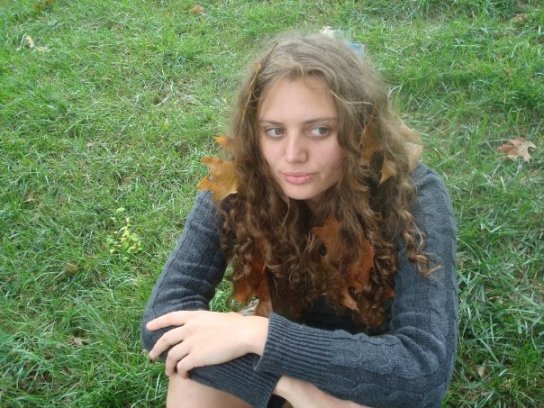
I’m happiest with my hair when it air dries after a swim in the ocean. But since I can’t go to the beach every morning, I rely on some products and rituals to keep it under control. My routine is constantly changing but right now it goes like this: After showering I towel dry my hair just enough so that it’s not dripping anymore. Then I use Garnier Fructis “Curl Sculpting” Gel to twirl out some curls. The gel helps define the curls and minimize frizziness as it dries. Next I put my hair up in a small towel for about 10-15 minutes. During this time I usually get dressed and put on makeup while my hair is out of my face. Then I lose the towel and scrunch in some mousse (I like Garnier Fructis Curl Construct Mousse) to add volume. If it’s cold outside I use a hair dryer with a diffuser to dry it completely. If not, I let it air dry and add a little hair spray if it’s humid or rainy (John Frieda Frizz-Ease is my favorite). If I need to style it when it’s dry, I just add some mousse and try not to stress out when it gets really big. If I’m going out I use more gel and make tighter curls. I’ve been trying to experiment with more natural products, which are supposed to work better with curly hair anyway, but I have yet to find stuff that works better than what I currently use. New England weather can be pretty tough on hair.
What I love about curly hair is that it still looks good when messy and can stay styled for awhile with minimal upkeep. These days I only get a 1-2 haircuts a year so I don’t mind paying a little extra to go to a nice place. Once a hairdresser handed me a thin-toothed comb and asked me to brush my hair out before she washed it. Things did not go well. Finding a hair salon that understands curly hair is crucial!
+
Long Hair, Don’t Care
by Fonseca
This is a love story: Not about me loving other women, but loving my hair and myself.
I love having approximately 3.5 tons of curly brown hair. While other queer girls are perfecting their quiffs and fauxhawks, my incidental butchness is coiled up in my long hair. The curls are a paternal trait; they connect me to the generations of burly Cuban laborers and display my ancestry more than my skin color ever will. My relationship with my hair is comparable to that of Samson, the guy whose superhuman strength was attributed to his long hair. Like him, the longer my hair is, the happier and healthier I seem to be.
At 23, I can endlessly talk about how awesome my hair is, all while enumerating ways you can’t really know me without knowing my hair; how it’ll always let you know when I’ve been behaving naughtily or when it’s about to rain. This wasn’t always the case, though.
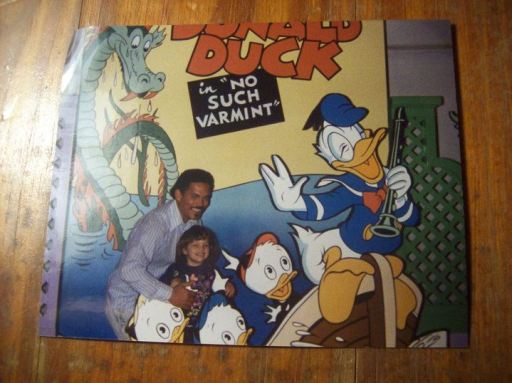
I was born with straight hair. I don’t know what the heck happened between the ages of three and five, but my locks went into full-on kinky curly mode. This incident coincided with my newfound obsessions with the Yellow Power Ranger and Moesha Mitchell. It’s possible that my follicles were trying to tell me something: That, like my hair, I wasn’t actually straight.
My hair changed, as was the way I was treated. Tomboy tangles are ten times more painful to remove when your hair type is essentially a spiral knotted around itself. After I became curly, I began spending a lot of afternoons seated, a parental figure standing behind me, yanking a comb through my hair. The quickest way to piss off my nappy-headed six year-old self was to tell me that you wish you “had my hair.” I would’ve happily shaved it off and given it to you, painful detangling sessions and all. Knowing that my hair was his hair, my father taught me to use his gel to prevent both tangling and having to spend more of my precious kickball time under the comb. Along with thickening my scalp and teaching me a hell of a lesson in patience, those chair sessions would later offer me an inkling on how to manage my curls. As a preteen, accepting coiffure tips meant acknowledging that I was stuck with this hair type. I wasn’t ready for that. On the contrary: I was determined to beat the curl out of my girl.
In middle school, I wore my hair in a snug, curl-free bun. I unknowingly fell in love with my hot girl drum major. I brushed the curl out. I dated a boy who resembled Shaggy from Scooby-Doo. In high school, I used a flat iron. I didn’t date anyone. I underwent my first and only relaxer, which held my hair straight for two days out of the promised 60. I spent too much time staring at the cheerleading captain’s hips as she walked across our AP English classroom. I started questioning things about myself. I sneaked around and watched The L Word. I cut my hair disastrously short (just FYI, the Shane cut was soooo not engineered for curly hair).
By college, I’d figured my shit out. I realized what my body wanted: To be with other women. And my hair, well, it wanted to be free, too. My hair grew out; I grew with it. Everything finally felt right.
Shampoo: None! My body does a stellar job of engineering its own natural oils. Shampooing only seems to strip my hair of those while exacerbating the much-dreaded frizz factor.
Conditioner: Pantene Pro-V Medium-Thick Hair Solutions. I’m a co-washer, which means I never use shampoo, just conditioner. I go through this stuff like most people go through gasoline.
Product: While my hair’s still wet and after I’ve run a comb through it, I use Cantu Shea Butter Leave-In Conditioner followed by Softee Protein Styling Gel. My life is basically an exercise in getting curious looks from other women in the “ethnic” hair care section. Because I live in the Southeastern United States AKA Satan’s Sauna, I cannot get away without using these things. Otherwise, I’ll wind up looking like Monica Geller in that one episode of Friends.
Styling: Air drying, hand teasing, comb teasing, until dry. Shaking my head like a little lion is a personal fave. I also try to refrain from touching my hair after it dries in order to avoid unnecessary frizz and oil build-up.
+
Embracing the Curl
by Laura
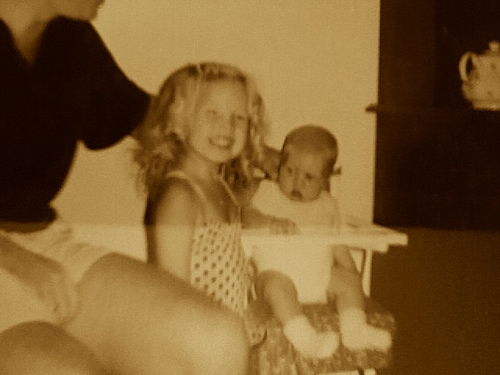
Like most curly girls, my hair and I have a complicated relationship. I spent 10 years fighting with my hair in what was ultimately a losing battle in every sense. I’ve spent hundreds of dollars on straighteners, treatments, special gels, conditioners and supposedly magic shampoos. Countless hours that would’ve been better spent doing important things (like, for example, sleeping) were instead wasted on blow drying, flat ironing and hot roller-ing. Don’t get me wrong, I love playing beauty shop. The problem was that after spending all that money and time on my hair, I didn’t feel any more beautiful than before. Having straight hair wasn’t just about wanting to look a certain way, it was a special brand of self-loathing that consumed me from 13 to 23.
When my hair started breaking off in massive pieces every time I combed it at 22, I finally started looking at my obsession differently. What was the point of having luxurious straight hair if no one could run their fingers through it? I turned to the internet to see what I could learn about repairing damaged hair and kept finding myself on natural hair websites. It took six months of reading sites like blackgirlwithlonghair before I realized that the best way to heal my hair just might be to let it do what it wants to do. As a white girl, I’m fully aware that I’ll never be subjected to racism via hair politics, but the message on these blogs — there’s nothing wrong with the way my hair is — and the advice on handing curly hair was exactly what I needed to hear. Why was I washing my hair every day? Why had I never considered leave-in conditioners or oils for moisturizing? Why didn’t I realize that gels and tight ponytails were causing breakage and a halo of baby hairs? Why was I so convinced that my my curly hair was heinous? Simply put: with the exception of my mother, who had no advice to offer but a deluge of unheard compliments during my teenage years, no one ever told me otherwise.
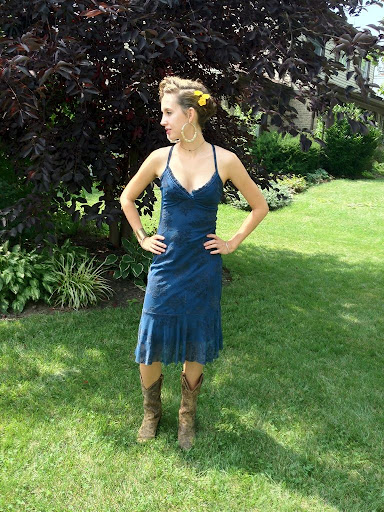
I’m seven months into growing out a mohawk and letting my hair go wild and free, and I think I’m finally starting to get the hang of things. The two times I straighten during that time didn’t feel nearly as triumphant in the past. Instead of being a fight against nature and myself, it felt kind of like trying on new shoes; different, but not life-altering.
As far as moisture goes, my hairs falls on the insanely dry end of the spectrum and I’m prone to eczema, which makes figuring out a schedule for hair washing tricky. Wash it too much and it loses its shine and my scalp starts getting flaky. Wash it too little and the eczema flares up and itches with all the might of a thousand mosquito bites.
Shampoo: Definitely sulfate-free. I was skeptical about the whole sulfate-free thing at the beginning, but after being given a free bottle at the grocery store and using it for a month, I haven’t been able to go back. Sulfates strip all the moisture from your hair, leaving it feeling squeaky clean. While that clean feeling is nice for a little, it means that a) your scalp goes into overdrive replenishing those chemicals, making your hair unnecessarily oily and b) your curls are going to frizz like nobody’s business. I use Trader Joe’s Tea Tree Shampoo to ward off any possibility of dandruff since I like to go 4-7 days between washes.
Conditioner: Honestly, I just buy whatever’s cheap. I’ve tried the fancy stuff, but I didn’t notice any difference. The real magic comes from what I do before and after I shower. Mainly…
Oils: Oils are what make my hair do what I want it to do. I massage a mix of coconut oil and tea tree oil into the driest parts of my scalp (all around the edges) while my hair’s still wet and coat the ends with coconut oil before it dries. About once a month or do, I treat my hair with hot olive oil for an hour before I shower and then wash it all out before continuing with the rest of my routine.
Styling: Because I’m trying to stay as far away from heat as possible on a day-to-day basis, I usually fall asleep with wet hair or let it air dry. Because bed head isn’t always the exact look I’m going for (and because my hair is in a very special stage of awkward growing out), I rely on bobby pin up-dos during day that, when taken down, leave my curls pretty and well-defined if I’m going out later that night and want to look fancy.




